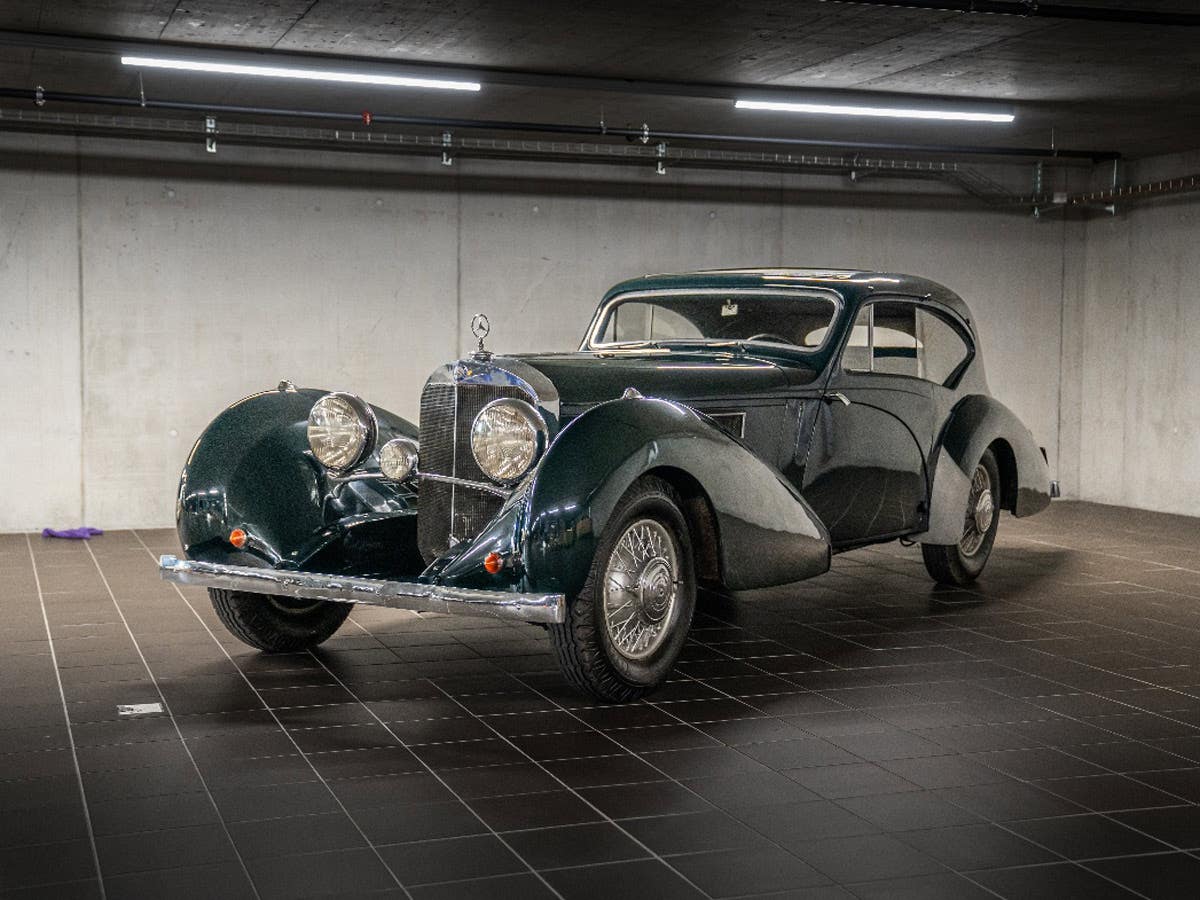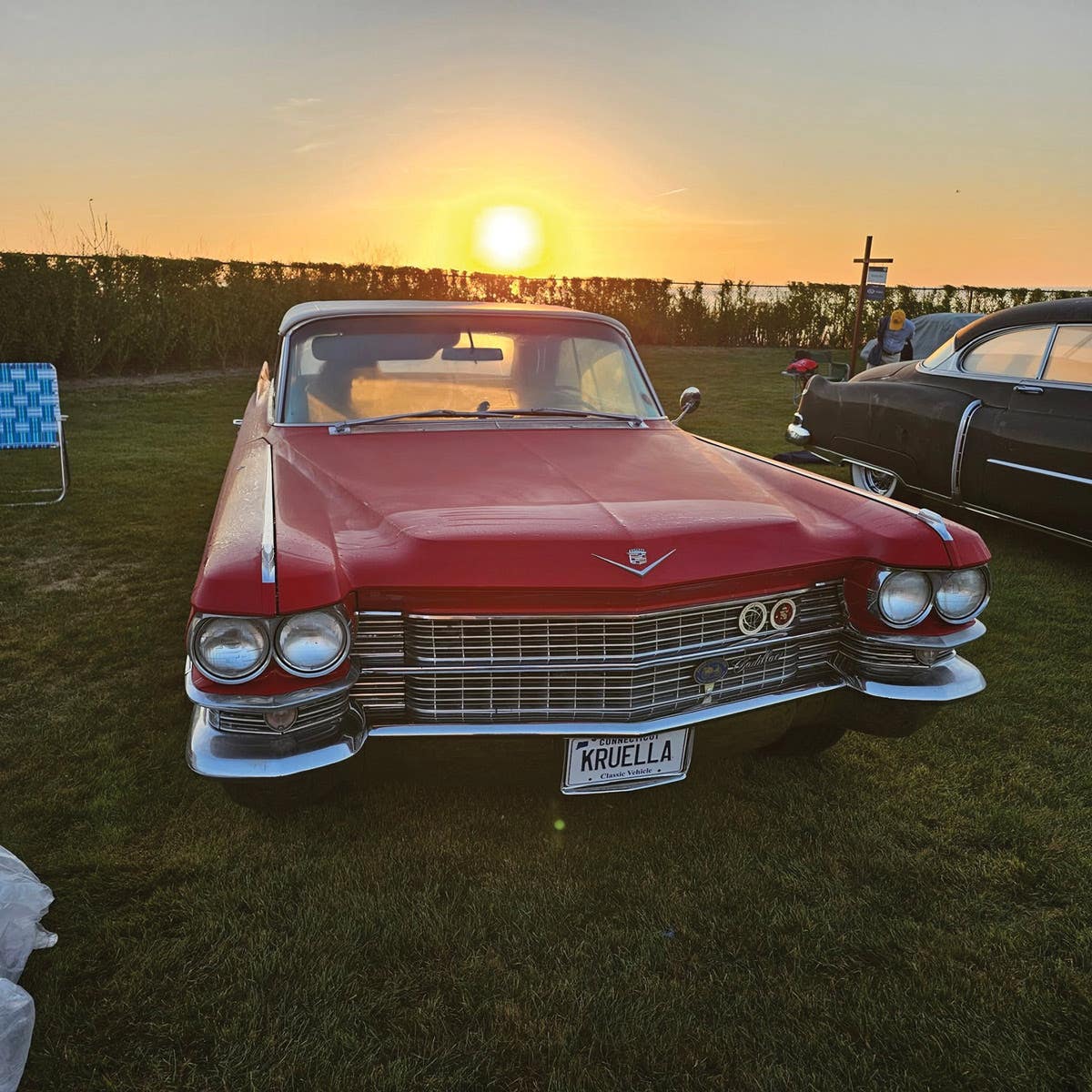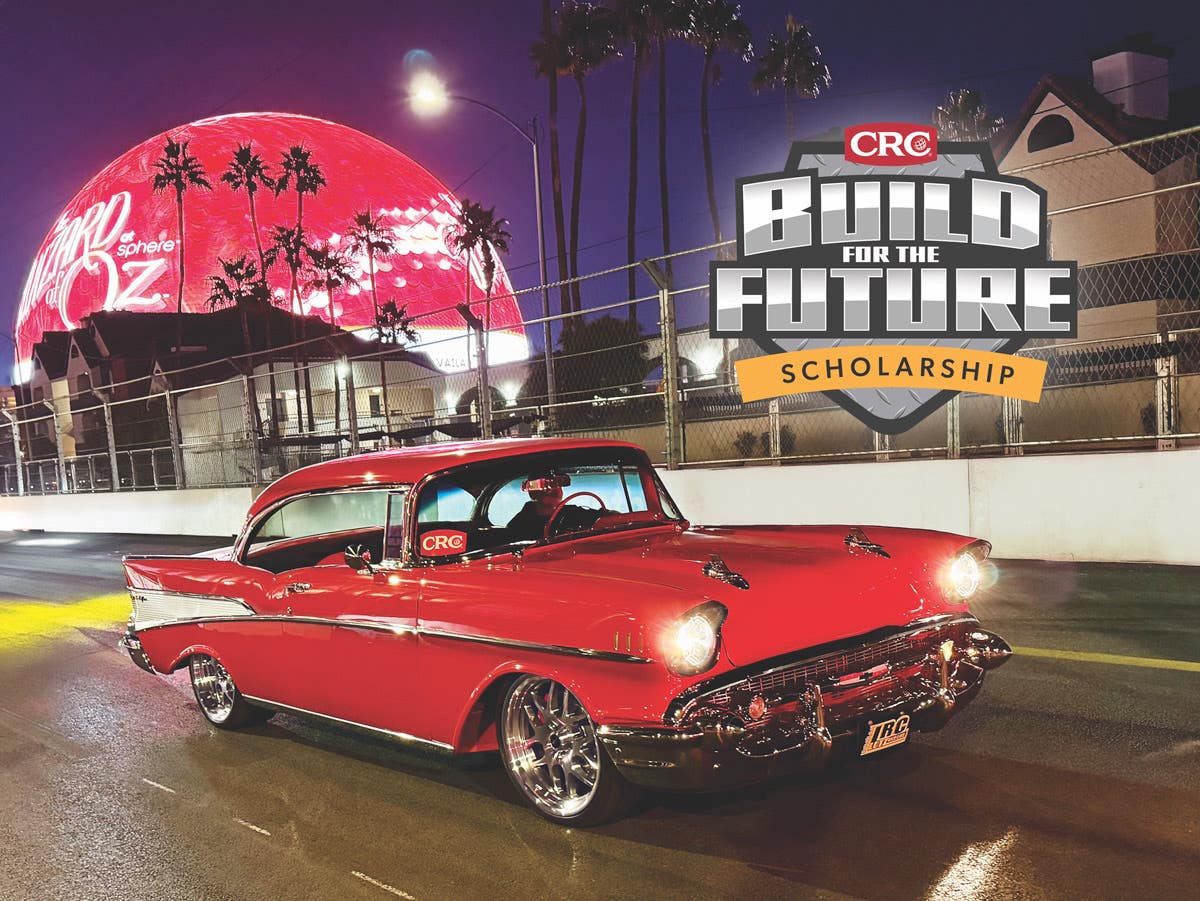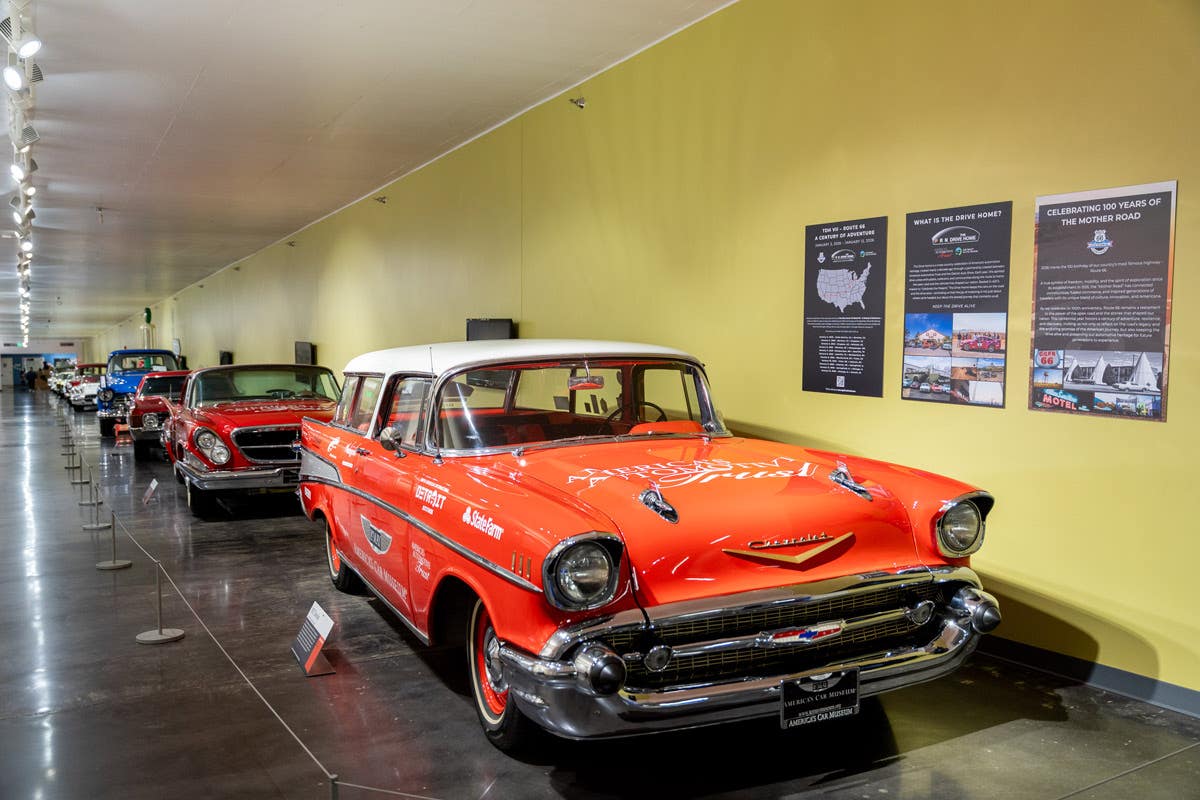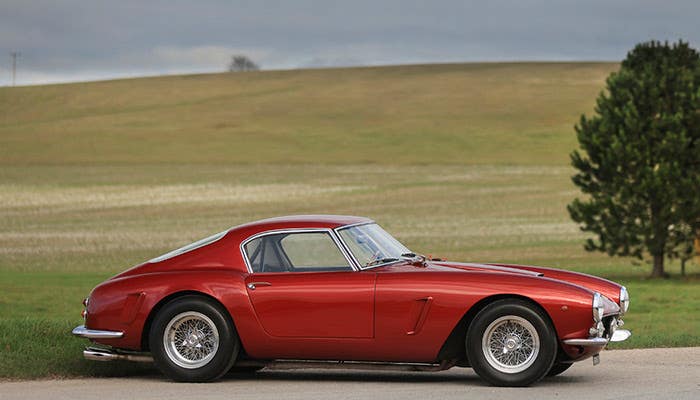GM Motorama makes its way to the Petersen Automotive Museum
Six original GM Motorama cars to be displayed at Petersen Automotive Museum courtesy of the Joe Bortz Collection.
Not since General Motors’ original Motorama traveling shows have six of its mid-1950s dream cars been displayed together. For two full years beginning this April, the Petersen Automotive Museum will unite them, allowing visitors the “Motorama experience” once again.
The display is titled GM’s Marvelous Motorama: Dream Cars from the Joe Bortz Collection.
“Never before in the last 65 years have six Harley Earl Motorama concept cars been under one roof at one time since the original Motoramas that took place in the 1950s at the Waldorf Astoria Hotel,” said longtime famed concept car collector Joe Bortz, who is loaning the cars to the museum. “This presentation of the collection represents over 45 years of building of the Bortz Auto Collection of concept cars.
“For the older crowds, this will be a matter of re-experiencing the delight of when they had the opportunity in the 1950s, as youngsters, to actually see Harley Earl’s General Motors Motorama show,” Bortz continued. “For this older group, the recall of these memories have undoubtedly never been forgotten. The younger collectors, who never had the opportunity to see Harley Earl’s Motorama, perhaps only in pictures, will have their first opportunity to see these ‘live,’ real-deal Harley Earl concept cars in the flesh.”
The concept or “dream cars,” as they were once called, that will be displayed at the Petersen Automotive Museum are the 1955 Chevrolet Biscayne, the 1953 Buick Wildcat I, the 1953 Pontiac Parisienne, the 1954 Pontiac Bonneville Special and the 1955 LaSalle II roadster and companion sedan.
“Joe Bortz has an incredibly unique collection of historic cars, the likes of which have never been displayed at the museum,” said Petersen Automotive Museum Executive Director Terry L. Karges. “The Motoramas were an important part of automotive history, and we are excited to share these ‘dream cars’ with enthusiasts from around the world.”
"The Petersen Museum is extremely proud to exhibit six original GM Motorama Dream Cars,” said Jonathan Eisen, Associate Curator at the Petersen Automotive Museum. “No cars excite the public like concept cars. They are glimpses of the future, and these particular concepts come from an era of great optimism, when the future of the automobile seemed limitless."
To help create a fully immersive Motorama experience, the Petersen Automotive Museum will also be displaying the artwork of Carl Renner, a GM designer whose work included penning concept cars during this period. Among Renner’s work is the design of some of the concept cars to be displayed at the museum.
Following is a description of the cars to be displayed and their importance compiled by owner Joe Bortz who has been researching the cars since the 1980s.
1955 Chevrolet Biscayne
The 1955 Chevrolet Biscayne is considered to be the first concept car designed by Harley Earl and his design staff as a compact. It was also the “showcase” car that was used for the introduction of Chevrolet’s new 265-cid V-8 engine for 1955. This car was equipped with many styling/design cues that were later used in production cars from various General Motors brands. A few examples are the rear-end design of the car, which is almost identical to that of the subcompact 1960 Chevrolet Corvair. The design of the wheel covers is almost identical to the design of the new 1956 Chevy wheel covers. The cove on the side was a hint of what was to be the cove on the side of the 1956-‘57 Corvette. The wraparound windshield not only wrapped around on the side, but also wrapped into the roof, a feature that was incorporated on many of the large production cars for General Motors in 1959. The tips of the front fenders of the Biscayne were styling cues later used on the 1963 Buick Riviera.
Other notable features on the 1955 Chevrolet Biscayne include the suicide rear doors, which did not have a post between the front door and rear door to latch, but had latching mechanisms in the rocker panel. Also, both front seats could swivel out for the ease of getting in and out of the car.
Very seldom was the color green used for a concept car, but in this case, it was a big hit.
The 1955 Chevrolet Biscayne was built as a fully running car with the 265-cid V-8 and Powerglide transmission and was a gigantic hit in the Chevrolet displays at all the GM auto shows in which it appeared across the United States.
1953 Pontiac Parisienne landaulet town car
It is interesting to note that the 1953 Pontiac Parisienne was not only a show/concept/dream car for Pontiac in 1953, but again in 1954, when the car reappeared a show/concept/dream car. Only the outside color was changed between show seasons; it went from black to a metallic gray, and the interior materials were also reupholstered in a different color. The color scheme was considered most striking with the black exterior and the pink front seats.
General Motors infrequently used the same concept car for a two-year feature, making the Parisienne unusual.
A landaulet town car is to be chauffeur-driven, and with four doors for the convenience of passengers. In this case, because it was a show/concept/dream car, the designers took the “liberty” to make it a two-door landaulet town car just to make it different. The materials on the Parisienne’s front chauffeur’s compartment are completely different than the materials for the back seat for the passengers, as on a prewar town car. Further, it is interesting to note that the passenger seat is designed so that when the passenger door is open, the front passenger seat moves all the way forward for the ease of passengers’ entry and egress.
The 1953 Pontiac Parisienne is built on a fully running 1953 Pontiac chassis with the straight-eight engine and Hydra-Matic transmission.
When Joe Bortz acquired this car in the mid 1980s, he notified Dave Holls, who was then the Vice President of Design for General Motors. Holls asked Joe if the car came with its Plexiglas top. Bortz indicated that he didn’t have the top, and had never seen any period pictures of the car with a Plexiglas top in place. Holls said that GM did not want to use the clear Plexiglas top it created for the car, because Ford was already using a clear Plexiglas top on one of its cars and GM didn’t want to look like it was copying the idea. However, at a luncheon that he had with Bortz in the executive lunchroom at the GM Tech Center, Holls drew what the top looked like on a napkin, as the clear top had apparently been permanently lost. Bortz kept that napkin and, in 2008, had a replica top made that is now with the car.
The 1953 Pontiac Parisienne is also unusual among concept cars because it is made out of 100 percent metal and not fiberglass like most other concept cars of the period. Therefore, the 1953 Pontiac Parisienne is loaded with lots of lead to complete the modifications, and the extra weight provides an extra-smooth ride going down the road.
The Parisienne was also the beginning of GM showing its production wrap-around windshield that would be employed on many of its production cars starting in 1954 and 1955. The head designer for General Motors Interior at that time was Henry Lauve from France, and he had free reign to design the full interior on the 1953 Pontiac Parisienne. Bortz met Henry Lauve and his wife at the Auburn Cord Duesenberg Museum in the mid 1990s where Lauve told Joe that he considered the interior of the 1953 Pontiac Parisienne one of his works of art.
1953 Buick Wildcat I
The 1953 Buick Wildcat I is a fully fiberglass car that sits on a shortened 1953 Buick chassis with a running Buick V-8 engine and Dynaflow transmission. This is a fully running car with fully functioning gauges and a futuristic convertible top that, when the button is pushed to set down the top, the back quarter of the top pops up and off the rear lid. The rear lid opens up and the top folds down, and then the rear lid folds down over the top. This power-operated disappearing convertible top system was very advanced for 1953.
The 1953 Buick Wildcat I has a wrap-around windshield, the gas filler under the rear taillight, exhaust that exits through the body and its very famous “Roto-Static” front hubcaps. The front Roto-Static hubcaps have vents on the front and do not spin with the wheel; they were designed to cool the brakes under hard braking.
Further, the 1953 Buick Wildcat I is the only car that Bortz has ever seen that has the same ornament on the front hood and also an identical ornament on the rear trunk lid.
It was well known among the many designers who worked with Harley Earl that his two favorite divisions at General Motors were LaSalle and Buick. Many concept cars weren’t fully functioning, yet the 1953 Buick Wildcat I is one of the most highly detailed concept cars, and every one of its innovations is fully functioning. The car is completely operable, and even the interior of the trunk is highly finished with carpeting and trim.
It is interesting to note that, at the Wildcat’s very first show, it was presented in black. Designers soon decided that it should be painted white and thereafter, it was always shown in the white color that it is currently painted.
The outside door handles are not handles, but are pushbuttons and work extremely well. The interior has been restored in the exact original green color that it was when the car was brand new. This concept car is easily capable of running all day long at 65 mph.
1954 Pontiac Bonneville Special
The story goes that Harley Earl went to the Bonneville Salt Flats to watch the cars race and was so impressed that he decided to design a Pontiac concept/dream car for the General Motors Motorama named after the Bonneville Salt Flats.
One of the elements that was in play in the early 1950s was the fact that airplanes were now powered by jet engines, rather than rotary-prop engines. Earl designed the 1954 Bonneville Special with many of the styling cues of a jet plane, including a realistic dome cockpit with wing doors, and with a backend mimicking the rear of a jet plane fuselage. Even the spare tire cover had a look borrowed from the back end of a jet plane and hubcaps that looked like the insides of the jet turbine engine. The headlamps were covered to make the car appear more aerodynamic. The instrumentation and even the floor mats were reminiscent of what would be seen in the cockpit of a jet engine-powered plane.
In 1954, the Pontiac Bonneville Special was the star of the show of all the 1954 General Motoramas and was on an elevated turntable to attract attention to it.
Of the two that exist today, the Bortz Bonneville Special is the only Bonneville Special that was ever presented at the 1954 General Motors Motorama shows and is considered to be the most original General Motors Motorama car of all the Motorama cars that exists in the world. The paint, chrome, interior and everything else that can be seen on the car is original to it, except for the finish on the four side-draft carburetors that had to be rebuilt in the 1990s. The engine, transmission and rear end have never been taken apart, and nothing on the car has been rebuilt other than the brake system and power brake unit. It is believed that the air in the original tires is still filled with a good portion of 1954 air, as they only have a couple hundred miles on them.
The Bonneville Special is a fully running and functional concept car with a “hot rodded” 1954 Pontiac engine uniquely fitted by GM with four side-draft carburetors that allow the hood to be as low as it is. Also in place is a Hydra-Matic transmission and a production Pontiac rear end. The four-carburetor Pontiac engine is considered to have in excess of 275 hp. The body of this concept car is all fiberglass.
At the time of this concept car in 1954, the new 1955 Pontiac V-8 engine had been fully developed and was ready to go into production, and so the designers of the 1954 Pontiac Bonneville Special wanted to put in the forthcoming V-8 engine in the 1954 Pontiac Bonneville Special. However, the marketing department said that would hurt the sales for the 1954 Pontiacs, because potential customers would be tipped off that the 1955 Pontiacs would have V-8 engines and not buy 1954 production Pontiacs with their antiquated straight-eights. Therefore the compromise was to dress up the 1954 Pontiac Bonneville Special’s straight-eight engine and its compartment with lots of chrome, beautiful paint and the side draft carburetors.
Many people consider the 1954 Pontiac Bonneville Special to be the most important and best design of all the 1950s General Motors Motorama cars. Regardless of taste, the 1954 Pontiac Bonneville Special, is without question, the most original General Motors Motorama car that exists from any year.
1955 LaSalle II Roadster
The last two cars to be included at the Petersen Automobile Museum are the 1955 LaSalle II Roadster and the 1955 LaSalle II Sedan. These two cars are especially historically interesting, because, first of all, they are an extension from when Harley Earl came to General Motors in 1927. The first car that Earl designed with his special touch at GM was the 1927 LaSalle roadster, and it was a big hit. For this reason, Earl always had a soft spot in his heart for the LaSalle and the LaSalle name. By 1953-1954, Harley Earl knew his mandatory retirement from GM was coming in 1958 and decided to make the two LaSalle concept/dream cars as his “swan song.”
Carl Renner, who was Earl’s decades-long favorite designer, and who had come from Walt Disney studios where he was a cartoon artist, gave Earl the design idea for the LaSalle II concept cars. Earl treated Renner in very special ways, including giving him his own private studio.
For his LaSalle II Roadster and Sedan, Earl had the GM engineering department prepare a revolutionary engine that would be an aluminum block V-6 with double-overhead camshafts and fuel injection. Furthermore, the cars received the beginnings of independent rear suspension. Both cars were shown with this aluminum V-6 aluminum block, but the engine had not yet been fully developed by engineering and so they were not running in these LaSalle II concept cars. Because the engines were not fully developed, the engines in the LaSalle concept cars had no internal parts.
After the 1955 Motorama show circuit, Earl did not follow up with engineering to get the LaSalles’ fuel-injected aluminum V-6 engines running, nor was the engine otherwise developed to completion by GM. This is considered one of the biggest mistakes by GM, because in later decades, foreign car companies came out with cars powered by dual-overhead-cam, fuel-injected V-6 engines and independent rear suspension. To the vast majority of people, this appeared to be a new idea from GM’s foreign competitors. To add insult to injury, the imports’ fuel-injected V-6 engines made the designs of GM engines look old fashioned.
The 1955 LaSalle II Roadster is one of the smallest GM Motorama cars to be made and features suicide rear doors and a design cove that was later used on the production 1956 Corvettes.
It is further interesting to note that the 1955 LaSalle roadster was planned to be the basis for the design of the 1957 Corvette, but it was later decided to continue the design of the 1956 Corvette for 1957.
The design for the 1955 LaSalle roadster was from Carl Renner’s pen, and the original sketch for this design, which was presented to Harley Earl, is now in the Bortz Auto Collection.
It is further interesting to note that, while this car was being designed and built, Earl — a well-known dog lover among his family members — had his favorite dog pass away. As a memorial to his dog, he had the silhouette of his dog impregnated into the LaSalle hood ornament emblem in both the LaSalle II roadster and the LaSalle II sedan.
1955 LaSalle II Sedan four-door hardtop
Like the LaSalle II Roadster, the 1955 LaSalle II Sedan four-door hardtop has a fully fiberglass body and was equipped with the same prototype, aluminum-block V-6 engine with dual overhead cams. Although not running, the car was built with a Hydra-Matic transmission and a semi-independent rear suspension.
The two LaSalles’ tires had thin, white stripes on the sidewalls and also going down the middle of the tire tread. When Bortz was restoring the LaSalle Roadster, GM made a new set of correct tires for the cars.
The LaSalle II Sedan remains basically the way it was when discovered by the Bortz Auto Collection during the mid 1980s at the Warhoops Junkyard near Detroit. It is one of the three cars that will be presented at the Petersen Museum that were found at the Warhoops Junkyard, although it is the only car that remains in unrestored, as-found condition.
The story of the LaSalle II Sedan goes like this: GM’s policy for its concept cars was that, when they were slated to be destroyed—and they were usually destroyed—a low-level executive had to be present when the cars were dropped off at the junkyard. The executive was also expected to witness the cars being cut up and crushed. The executive that was given this chore for the LaSalle II Roadster, LaSalle II Sedan and Biscayne was tasked with the job right before Christmas 1958, and he was very unhappy about the fact that he was expected to be at the junkyard around Christmastime to watch the cutting of the cars, and especially their complete crushing, and therefore signed off on the cars being destroyed without actually witnessing their complete destruction. In actuality, the executive only witnessed the LaSalle II Roadster and Biscayne getting cut apart before he left. Unbeknownst to him, workers at Warhoops Junkyard intentionally cut the cars in places where they could eventually be reassembled.
After the GM executive left Warhoops Junkyard, owner Harry Warholak took the cars and hid them. In the mid 1980s, Warholak heard that Bortz was building a major collection of concept cars and he decided to sell the 1955 Chevrolet Biscayne, the 1955 LaSalle II roadster and the 1955 LaSalle II sedan to Bortz, who also wanted to see the cars preserved.
The 1955 LaSalle II sedan is presented in junkyard “fresh” condition to give the public an idea of how these cars were found in the 1980s, and a small indication of what it took to get the others — especially the LaSalle II Roadster and Biscayne, which were cut into pieces—back to Motorama condition.
Look for these cars from the Bortz Auto Collection at the Petersen Automotive Museum starting in early April 2024.
6060 WILSHIRE BOULEVARD, LOS ANGELES, CA, 90036
323-930-2277 | INFO@PETERSEN.ORG| https://www.petersen.org/
If you like stories like these and other classic car features, check out Old Cars magazine. CLICK HERE to subscribe.
Want a taste of Old Cars magazine first? Sign up for our weekly e-newsletter and get a FREE complimentary digital issue download of our print magazine.



